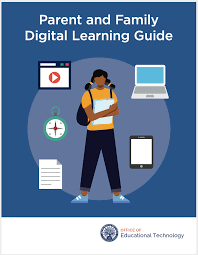Introduction:
The global pandemic has catapulted parents and educators into the world of remote learning. With limited time to prepare, many parents have been left with questions on how to best support their children’s education from home. To address these concerns, several organizations have provided free guides to help navigate this new educational landscape. In this article, we’ll explore some of these invaluable resources which are designed to answer the most common parent questions about remote learning and provide practical solutions.
1. Common Sense Media’s Remote Learning Resources
Designed for parents new to remote learning, Common Sense Media offers numerous articles and videos addressing topics like setting up a conducive home environment, creating daily routines, balancing screen-time, and facilitating social interactions for children. They also provide quick tips, app lists, and guidance on selecting the right educational tools based on age and grade levels.
Link: https://www.commonsensemedia.org/resources-for-parents-during-the-coronavirus-pandemic
2. Wide Open School
Wide Open School is a collaboration between leading educational organizations like National Geographic, Scholastic, and Khan Academy. This site consolidates remote learning resources by grade level and includes fun activities, engaging videos, lesson plans, and worksheets for students. Parents can also find useful guides to support their child’s emotional well-being and learning style.
Link: https://wideopenschool.org/
3. Understood.org’s Remote Learning Guide for Parents
Understood’s comprehensive guide is targeted at families with children who have learning disabilities or attention issues. Alongside general remote learning advice, they provide specialized resources that cater to individual challenges like ADHD or dyslexia. Their extensive list of support tools includes suggestions for setting up accommodations for remote learning, behavioral checklists for parents, sample schedules, and webinars with experts.
Link: https://www.understood.org/en/school-learning/coronavirus-latest-updates#wgu
4. Edutopia’s Remote Learning Guide
Edutopia offers insightful articles and videos focusing on various aspects of remote education, such as ways to support marginalized students, monitoring student progress, the role of parental engagement, and communication tactics. They also emphasize the importance of meaningful relationships with students, regardless of the distance involved in remote learning.
Link: https://www.edutopia.org/remote-learning/articles-and-downloads
5. Harvard Graduate School of Education’s Remote Parenting Resource
The Harvard Graduate School of Education has compiled a range of resources to support parents facing the challenges of remote learning. By providing research-backed advice on managing emotions, conversations, and routines, they aim to empower families to make the most of this uncertain time while maintaining their child’s educational progress and mental well-being.
Link: https://www.gse.harvard.edu/uk/remote-parenting_RESOURCE_CENTER
Conclusion:
As parents around the world continue to adapt to remote learning, these free resources offer essential guidance and support to ensure children receive the quality education they deserve. By utilizing these guides, families can confidently tackle any challenges that arise during this unprecedented time and help promote academic success for their children.














